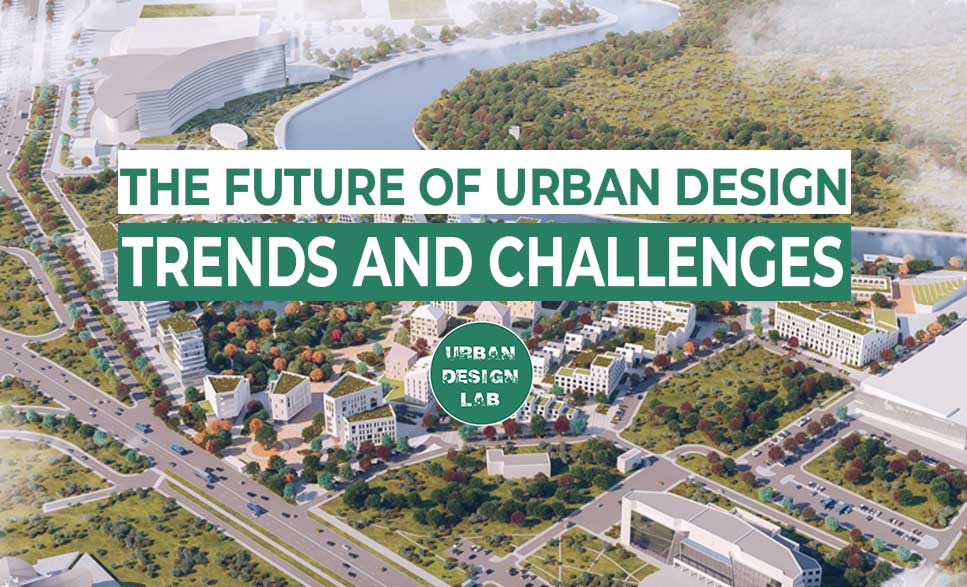Urban planning shapes the future of our cities. Understanding current trends helps us build better environments.
In recent years, urban planning has evolved rapidly. New technologies and societal needs drive this change. Cities around the world face unique challenges. From sustainability to smart technology, urban planners must adapt. They balance growth with environmental concerns. They also focus on improving quality of life for residents.
Keeping up with the latest trends is crucial. This ensures that our cities remain livable and vibrant. In this blog, we will explore the top urban planning trends. These trends are transforming how we design and manage urban spaces. Stay tuned to learn how these changes impact our daily lives.
Related Article: Urban Design Principles: Transforming Cities for the Future
Related Article: Urban Design Ideas: Transform Your Cityscape with Innovation
Green Infrastructure
Green infrastructure is a vital part of urban planning. It incorporates natural elements into city design to improve quality of life. This approach helps manage water, reduce pollution, and create more green spaces. Two key components of green infrastructure are urban forests and green roofs.
Urban Forests
Urban forests consist of trees and plants in city areas. These green spaces offer many benefits. They clean the air, provide shade, and reduce the urban heat island effect.
Urban forests also support wildlife. Birds and insects find homes in these green areas. Trees and plants absorb rainwater. This reduces flooding and improves water quality.
| Benefits | Description |
|---|---|
| Air Quality | Trees absorb pollutants and produce oxygen. |
| Shade | Reduces heat and provides cool areas. |
| Wildlife Habitat | Supports birds, insects, and small animals. |
| Water Management | Absorbs rainwater and reduces flooding. |
Green Roofs
Green roofs are rooftops covered with plants. They offer several advantages. These roofs reduce energy costs by insulating buildings. They also absorb rainwater, which reduces runoff and flooding.
Green roofs provide habitats for birds and insects. They improve air quality by absorbing pollutants. Additionally, they reduce the urban heat island effect by cooling the air.
- Energy Efficiency: Insulates buildings and lowers heating and cooling costs.
- Water Absorption: Reduces stormwater runoff and flooding.
- Air Quality: Plants absorb pollutants and produce oxygen.
- Urban Heat Island Effect: Cools the air and reduces city temperatures.
Related Article: Smart City Design: Transforming Urban Living for the Future
Smart City Technologies
Smart City Technologies are transforming urban landscapes worldwide. These technologies leverage advanced innovations to enhance the quality of life. They aim to create more efficient, sustainable, and livable cities. Two key components of smart city technologies are IoT integration and data-driven planning.
Iot Integration
IoT, or the Internet of Things, connects everyday devices to the internet. This connection allows for seamless communication and data exchange. In cities, IoT can manage traffic lights, monitor air quality, and improve energy use. Smart streetlights can adjust brightness based on activity levels. Sensors can detect leaks in water systems, saving resources and costs. IoT integration makes cities smarter and more efficient.
Data-driven Planning
Data-driven planning uses data to make informed decisions. Cities collect data from various sources like sensors and cameras. This data helps in understanding patterns and trends. Urban planners can use this information to optimize public transport routes. They can also improve waste management systems. Data-driven planning ensures cities grow in a sustainable and organized manner. It leads to better resource management and improved urban living.
Sustainable Transportation
Urban planning is changing to include more sustainable transportation. This shift reduces pollution and improves quality of life. Cities are adopting new technologies and methods to make transportation greener. Let’s explore two key trends: Electric Mobility and Public Transit Innovations.
Electric Mobility
Electric mobility is growing quickly. Basically, electric vehicles (EVs) are becoming more common on city streets. EVs produce fewer emissions than traditional cars. This helps improve air quality. Charging stations are popping up everywhere. They make it easier to own and operate an EV.
Benefits of Electric Mobility:
- Reduces greenhouse gas emissions
- Lowers noise pollution
- Decreases dependency on fossil fuels
| Type | Advantages | Challenges |
|---|---|---|
| Electric Cars | Cleaner air, lower costs | Charging infrastructure |
| Electric Buses | Efficient, eco-friendly | High initial cost |
Public Transit Innovations
Public transit is also evolving. Cities are investing in new technologies to improve efficiency. Smart buses and trains use real-time data to plan routes. This reduces wait times and makes travel smoother.
Examples of Public Transit Innovations:
- Smart ticketing systems
- Real-time tracking apps
- Electric and hybrid buses
These innovations make public transit more attractive. More people using public transit means fewer cars on the road. This reduces traffic congestion and pollution.
Affordable Housing
Urban planning now prioritizes affordable housing. As cities grow, the need for affordable living spaces increases. This demand drives new trends in urban development. These trends aim to provide cost-effective housing solutions for all residents.
Mixed-use Developments
Mixed-use developments are on the rise. They combine residential, commercial, and recreational spaces. This approach creates vibrant, walkable communities. Residents have easy access to shops, offices, and parks. It reduces the need for long commutes. Mixed-use areas also foster a sense of community.
These developments often include affordable housing units. This ensures diverse living options. Low-income families can live in desirable neighborhoods. Mixed-use spaces support local businesses too. They drive economic growth in the area.
Community Land Trusts
Community Land Trusts (CLTs) offer another solution. They focus on long-term housing affordability. A nonprofit organization owns the land. Residents own the buildings on the land. This model keeps housing costs low. It prevents market-driven price hikes.
CLTs promote stable communities. They ensure residents can stay in their homes. This reduces displacement and gentrification. CLTs also encourage community engagement. Residents have a say in local development. This fosters a strong sense of belonging.
Climate Resilience
Climate resilience in urban planning is essential to tackle the effects of climate change. Cities are focusing on sustainable methods to handle natural disasters. This approach ensures the safety of residents and the sustainability of urban environments.
Flood Management
Flood management is crucial for climate resilience. Urban planners are using innovative techniques to manage water effectively. Green infrastructure such as rain gardens and permeable pavements helps absorb water. This reduces the risk of flooding.
- Rain gardens absorb rainwater.
- Permeable pavements allow water to seep through.
- Retention ponds collect and store excess rainwater.
These methods not only manage floods but also improve water quality. Urban wetlands are another effective solution. They act as natural sponges, absorbing and filtering water.
Heat Mitigation
Heat mitigation is another vital aspect of climate resilience. Cities are getting hotter due to climate change. Urban planners are adopting several strategies to cool down cities.
- Planting more trees.
- Creating green roofs and walls.
- Using reflective building materials.
Trees and plants provide shade and release moisture, cooling the air. Green roofs and walls help insulate buildings, reducing the need for air conditioning. Reflective materials on buildings and roads reduce heat absorption.
| Strategy | Benefit |
|---|---|
| Tree planting | Provides shade, cools air |
| Green roofs/walls | Insulates buildings |
| Reflective materials | Reduces heat absorption |
These measures are essential for a cooler, more comfortable urban environment. Effective heat mitigation improves public health and energy efficiency.

Credit: urbandesignlab.in
Related Article: Mixed-Use Development: Unlocking Urban Innovation and Growth
Community Engagement
Community engagement is a crucial element of modern urban planning. It involves citizens in decision-making processes and ensures their voices are heard. By involving the community, urban planners can create spaces that reflect the needs and desires of the people who live there.
Participatory Planning
Participatory planning allows residents to have a say in urban development. It empowers them to share their ideas and concerns. This approach leads to more accepted and effective plans. People feel more connected to their neighborhoods. They are more likely to support projects they helped shape.
Inclusive Design
Inclusive design focuses on creating spaces for everyone. It considers the needs of all community members. This includes people with disabilities, the elderly, and children. By considering different perspectives, urban planners can create accessible and welcoming environments. This approach promotes equality and enhances the quality of life for all residents.

Credit: archgyan.com
Conclusion
Urban planning trends shape our cities’ future. Smart cities improve efficiency and sustainability. Green spaces enhance urban life quality. Mixed-use developments create vibrant neighborhoods. Public transportation reduces traffic and pollution. Technology integrates seamlessly into urban environments. Walkable cities promote health and social interactions.
Adaptive reuse of buildings preserves history and resources. Urban planning must focus on people and the environment. Stay informed and involved in your community’s planning efforts. Together, we can build better cities for everyone.
Related Article: Green Urban Design: Transforming Cities for a Sustainable Future

Pingback: Green Urban Design: Transforming Cities for a Sustainable Future - SpaceArc